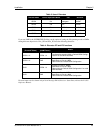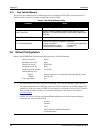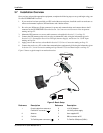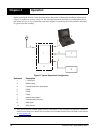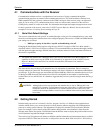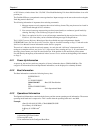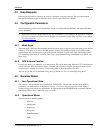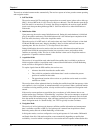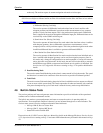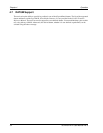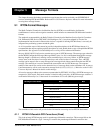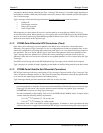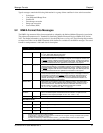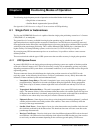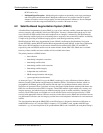
Operation Chapter 4
SUPERSTAR II User Manual Rev 3 33
mode only. The receiver reports its current navigation sub-mode on its host port.
Your receiver must be a BASE model to act as a base station. A list of models is in Appendix A of the L1
GPS Firmware Reference Manual and in our Price List available from the Sales side menu of our website
at www.novatel.com.
a. Differential (Roving Unit Only)
The receiver operates in Differential mode when data from at least 4 satellites with
adequate geometry and differential corrections and/or measurements exist to compute
position, velocity and time outputs. This is the preferred navigation mode. Differential
data is supplied to the receiver through the differential input port. Differential data can be
received only on the COM2 serial data port.
b. Stand-Alone Nav (Roving Unit Only)
The receiver operates in Stand-Alone Nav mode when it has data from at least 4 satellites
with adequate geometry, but no differential corrections or measurements, exist to
compute position, velocity and time outputs. This is the preferred navigation mode when
insufficient differential data is available to generate a differential GPS fix.
c. Base Station Nav (Base Station Unit Only)
The receiver operates in Base Station Nav mode once the time has been initialized and at
least 4 satellites with adequate geometry can be used for navigation purposes. Once in
this mode, only a change of configuration (rover mode requested) or a reset will cause the
unit to leave this navigation mode. In this mode, the unit will have the ability to transmit
the DGPS messages which are requested and allowed once its position is initialized. See
also Section 4.4, Configurable Parameters starting on Page 31 for position initialization
details.
5. Dead-Reckoning Mode
The receiver enters Dead-Reckoning mode when it cannot remain in Navigation mode. The speed
and direction is assumed to be constant to allow the receiver to provide an estimated position.
6. Fault Mode
The receiver enters Fault mode during the period of time in which the receiver outputs are affected
by one or more critical system faults. This mode supersedes all others and remains active until the
next power-down/power-up cycle. Fault mode is entered from any mode except Initialization.
4.6 Built-In Status Tests
The receiver performs self-tests and generates status information to provide an indication of the operational
readiness and to facilitate maintenance actions.
The built in test monitors system performance and status to ensure the receiver is operating within its
specifications. If an exceptional condition is detected, you are informed through one or more indicators. The
receiver status system is used to configure and monitor these indicators:
• Message ID# 49, Receiver Status Data
• Message ID# 51, Initiated BIT Result
• Status LED on the FlexPak-SSII
Please refer to the L1 GPS Firmware Reference Manual for details on the Message IDs above. See also Section
4.5.2, Operational States starting on Page 31 and status LED information may be found in this manual on Page
50.



